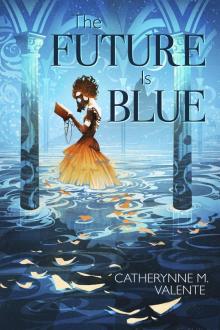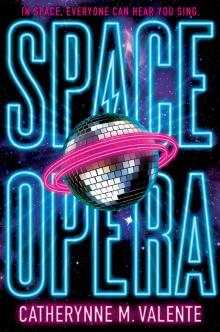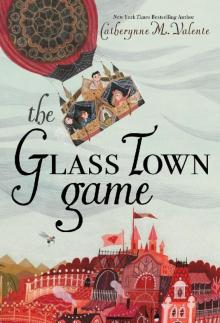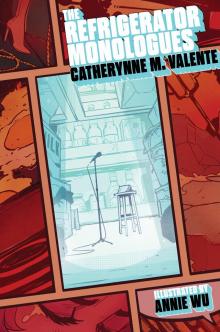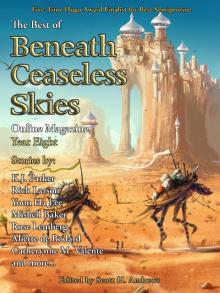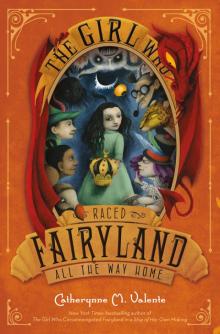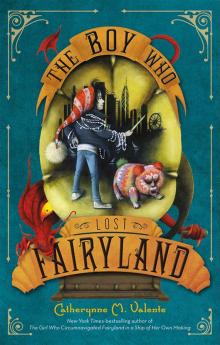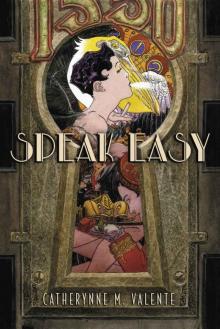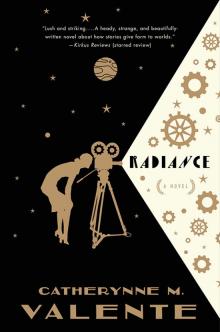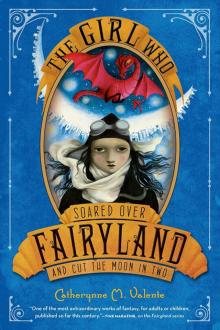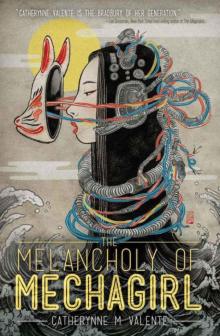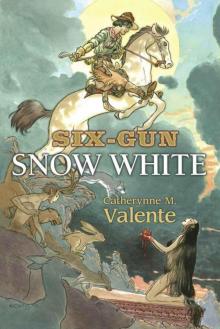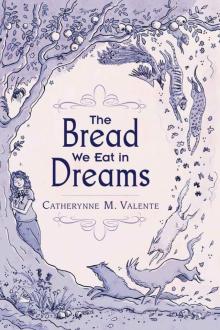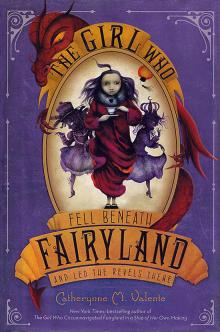


You Must Change Your Life
Rachel Corbett
Rodin did not await inspiration, for some pure expression to flow from his soul onto passive materials, as Rilke had always done. To Rodin, god was “too great to send us direct inspiration.” Instead, it was up to the artist to create “earthly angels.” That’s why Rodin approached unformed clay “without knowing what exactly would result, like a worm working its way from point to point in the dark,” Rilke would write in the monograph. He would grab hold of it with his huge hands, work it over, spit on it and come to know it entirely, energizing the object and stirring it to life in the process. “The creative artist has no right to select. His work must be imbued with a spirit of unyielding dutifulness,” Rilke wrote.
Rodin’s hyper-animated style of sculpting produced no less dynamic bodies of work. Rodin manipulated light to enhance the sense of movement in his figures. When the geometry of the planes aligned just right, light would coast and dart across the surfaces and create the illusion of motion. Sometimes Rodin measured the success of this effect by employing a candle test, which illuminated the points of intersection between light and shadow. Rodin once demonstrated the test to a student at the Louvre. Arriving in the evening, just before the museum closed, he held up a candle to the Venus de Milo. He instructed the student to watch the light as he moved it around her contours. Notice how it glided across over the surfaces without jumping at a single hollow, rift or seam. Candlelight revealed all flaws, he believed.
TOWARD THE END OF Rilke’s first month in Paris, Rodin received a commission for a portrait that would take up an inordinate amount of time. He began working through the weekends and became too busy to continue the long chats with Rilke. The poet decided to give the artist some space by spending more time on his own in Paris. He could trace Rodin’s artistic development there by following the sculptor’s footsteps across his native city. Rilke went to the Louvre, where he was surprised to find himself suddenly formulating strong opinions about art: The Winged Victory of Samothrace was a “miracle” of motion to him now, whereas the Venus de Milo looked too passive and static for his liking.
Rilke spent a week, every day from nine until five, at the Bibliothèque Nationale, where Rodin had copied so many illustrations as a boy. Rilke’s goal was to do the same with the great French Symbolists, to trace the lines of Baudelaire and Valéry until he could glide across their grooves as smoothly as a fingertip on wet clay. He also pored over reproductions of the Gothic cathedrals—those “mountain ranges of the Middle Ages”—which he knew Rodin worshipped.
Each day after the library closed, the poet walked back toward his hostel along the Seine, pausing at the Île de la Cité to watch the sun set over the two towers of Notre Dame. The cathedral built for the Virgin Mary had been ravaged and restored in battle after battle, its ornaments were looted, yet its walls stood as strong as its namesake’s will was chaste. To Rilke, it was all the more beautiful for enduring that humiliation. This was the hour when the river turned to “gray silk” and the city lights glowed like stars fallen from the sky. Once darkness fell, people would once again pollute the air with their music and perfume, but cathedrals always offered asylum from the senses. Like a forest or an ocean, a cathedral was a place where the world hushed up and time stood still.
It’s nearly impossible to stand before a cathedral and not consider the labor that went into building it. The painstaking process of its creation is as compelling as the consummate structure. Rilke marveled at the thought of the cathedral builders returning to work day after day, year after year, setting one stone on top of another. The cathedrals would “never have been finished if they had had to grow out of inspirations,” he thought. The vision alone would have been too daunting. They were completed only because the artisans chose to make this work their lives.
Rodin’s mantra, Travailler, toujours travailler, contradicted everything Rilke had learned about the fusion of art and life in Worpswede. But the poet had spent years watching the clouds, anxiously awaiting a muse that never came. Rodin’s example gave him permission to act. Now, to work was to live without waiting. More than that, Rilke concluded, “to work is to live without dying.”
CHAPTER
7
BIOGRAPHERS WOULD BEGIN AT THE BEGINNING. THEY WOULD describe a boy too busy etching his dull blade into wood to eat. A young man working at a vase factory in Sèvres. They would identify his early influences—Dante, Baudelaire and Michelangelo—and the moment of his prophetic awakening, the flash point upon which his future genius hinged. It would be both “common and touching.”
But this would be the wrong way to tell the story of Auguste Rodin, or at least not the way Rilke wanted to tell it. In October, Rodin went to visit a friend in Italy, leaving Rilke with three uninterrupted weeks to write his monograph. At his broken-down desk in the hostel, he began to imagine all the ways he might approach the dreaded first page.
He stared out the window at the brick wall on the other side. He paced and procrastinated. Unaccustomed to shutting his windows, he suffered the fatty stench of pommes frites wafting in and commingling with iodine vapors from the hospitals. When the odor became overwhelming, he took a walk to the Luxembourg Gardens, leaned his head against the gate and took a deep breath. But even then the smell of flowers, packed too tightly into their sidewalk gardens, irritated his delicate senses.
He would always return to the hotel by eight o’clock, before the drunks invaded the streets. Back at his desk, the smell replaced by burnt kerosene from the lamp, he considered starting the book with explanations of the sculptures that made Rodin famous. But Rodin’s fame had nothing to do with his work, he decided. He wrote it down on his stationery: “Fame is no more than the sum of all the misunderstandings that gather around a new name.”
Nor could it begin with Rodin’s childhood, because, after observing the sculptor in the flesh, Rilke had concluded that Rodin was born great. His eminence felt as eternal as that of a Gothic cathedral, or a chestnut tree in full bloom. To tell that story, Rilke would have to start in the branches and grow backward, reaching down into the trunk, then plunging into the dirt where the cracked seed lay.
Rilke laid down in bed, knowing he wouldn’t sleep. The vibrating trams kept him from fully relaxing. Even if he did doze off for a moment, the neighbors would soon be coming home, stomping up the steps so loudly that he’d jolt upright in fear that they would barge right through the door.
Lying there awake, he would summon Baudelaire, like a guardian angel. Rilke would recite to himself the beginning of his prose poem “One O’clock in the Morning” from Paris Spleen: “At last! I am alone! . . . the tyranny of the human face has disappeared.” But then he would begin to compare himself to Baudelaire and a new anxiety would set in.
Rodin never had this problem. He never questioned why he was an artist, or whether he should be. He knew that such doubts only distracted one from work, and Rilke was beginning to accept that work was all there was. He had spent so much time with the master by now that he could hold an entire conversation with him in his head:
“What was your life like?”
“Good.”
“Did you have any enemies?”
“None that could keep me from my work.”
“And fame?”
“It made work a duty.”
“And your friends?”
“They expected work from me.”
“And women?”
“I learned to admire them in the course of my work.”
“But you were young once?”
“Then I was like all the rest. You know nothing when you are young; that comes later, and only slowly.”
IN RODIN’S ABSENCE, Rilke sought out the company of other artists he admired. He met the Spanish portrait painter Ignacio Zuloaga, who was only five years older than Rilke but already well established in Europe, with several works on view at the Venice Biennale that year. From his barrel chest and thick black mustache the Basque artist exhaled an effortless confidence. He did not bother making sketches f
or his paintings, instead outlining figures in black streaks of charcoal directly on the canvas, then filling them in with a dark palette of paints.
Rodin had been so impressed with Zuloaga that he once traded him three bronze sculptures for one painting. Rilke would later conclude that, aside from Rodin, Zuloaga was the only figure in Paris “who affected me deeply and lastingly.” But their connection seems to have been largely one-sided. Despite several letters expressing Rilke’s admiration for the Basque painter, Zuloaga never responded as enthusiastically as Rilke probably would have liked. Yet Zuloaga did allow him to visit his studio once, where he introduced him to the work of another great master: El Greco. The stormy biblical scenes of the Greek-born Spanish Renaissance painter struck Rilke with a violent intensity he had only before known in nightmares. El Greco’s misproportioned bodies, long and sinuous as candle flames, seemed so far ahead of the present day, much less that of the sixteenth century, when they were painted.
That month, Rilke also had to arrange for his wife’s imminent arrival in Paris. He rented them each apartments a few blocks south of his Latin Quarter hostel, at 3 Rue de l’Abbe de l’Éppé. They would share the same roof, but keep separate rooms. The couple saw each other only on Sundays, when they often read each other passages from Niels Lhyne. For her birthday, Rilke bought her a volume of Gustave Geffroy’s essays, The Artistic Life, and inscribed it, “To Clara. The beloved mother. The artist. The friend. The woman.” No mention of the wife or the lover. But Westhoff may not have minded the omission then. She had already received several sculpture commissions within that first month, so this second residency in Paris was already proving far more rewarding than her first.
Most importantly, she finally had access to Rodin’s eyes. She brought him her work for critique nearly every Saturday, when he hosted an open house at his studio. “The nearness of Rodin, which does not confuse her, gives to her effort and becoming and growth a certain security and peace—and it proves to be good for her to be in Paris,” Rilke wrote. Of a visit to Meudon with her husband, she recalled a feeling “of being set free, of being surrounded by everything that did one good. The beautiful figures and fragments stood next to one in the grass or against the sky, the lawn invited one as if to children’s games, and in the middle of a little depression an antique torso stood in the sun.”
By this time, Rilke had nearly finished writing the monograph. He had observed and considered Rodin’s art from every angle and it had changed the way he saw the world: “Already flowers are often so infinitely much to me, and excitements of a strange kind have come to me from animals. And already I am sometimes experiencing even people in this way, hands are living somewhere, mouths are speaking, and I look at everything more quietly and with greater justness.” But while Rilke was learning to see like an artist, he had not yet mastered the handicraft of one. Where was the “tool of my art, the hammer, my hammer”? he wondered. How could he build objects out of words? How could he apply the principles of Rodin’s art to his poetry?
Rodin suggested that Rilke try out an assignment that he himself had undertaken as a student many years earlier. Regardez les animaux, professor Barye had told young Rodin. To the aspiring figurative sculptor, staring at beasts had seemed a second-rate task. But Rodin soon understood why animals have been objects of reverence for artists dating back since the cave painters.
Zoos at that time were research centers for the study of heretofore undiscovered specimens and symbols of colonial might. Displaying a lion or monkey at home paid tribute to France’s brave explorers abroad. For artists, they were museums of animals, providing contact with previously unseen aesthetic forms. For Barye, the Jardin des Plantes “was his Africa and Asia,” the author Henry James once said. The painter Henri “Le Douanier” Rousseau also spent years seated on a bench there, taking inspiration for his dreamlike jungle tableaux.
For Rilke, the menagerie of bears, gazelles, flamingos and snakes was a sanctuary compared to the human zoo on the other side of the gates. He began to study the caged animals, displayed behind bars like objects, the way Rodin looked at sculptures on pedestals. Each one was a frontier to be discovered. To guide him on this journey, Rilke recalled the teachings of his old professor from Munich, Theodor Lipps, and devised a process of conscious observation, which he would come to call einsehen, or “inseeing.”
Inseeing described the wondrous voyage from the surface of a thing to its heart, wherein perception leads to an emotional connection. Rilke made a point of distinguishing inseeing from inspecting, a term which he thought described only the viewer’s perspective, and thus often resulted in anthropomorphizing. Inseeing, on the other hand, took into account the object’s point of view. It had as much to do with making things human as it did with making humans thing.
If faced with a rock, for instance, one should stare deep into the place where its rockness begins to form. Then the observer should keep looking until his own center starts to sink with the stony weight of the rock forming inside him, too. It is a kind of perception that takes place within the body, and it requires the observer to be both the seer and the seen. To observe with empathy, one sees not only with the eyes but with the skin.
“Though you may laugh,” Rilke wrote to a friend, “if I tell you where my very greatest feeling, my world-feeling, my earthly bliss was, I must confess to you: it was, again and again, here and there, in such in-seeing in the indescribably swift, deep, timeless moments of this godlike in-seeing.”
In describing his joy at experiencing the world this way, Rilke echoed Lipps’s belief that, through empathy, a person could free himself from the solitude of his mind. At the same time that Rilke was studying at the zoo in Paris, Lipps was in Munich working on his theory of empathy and aesthetic enjoyment. In his seminal paper on the subject he identified the four types of empathy as he saw them: general apperceptive empathy: when one sees movement in everyday objects; empirical empathy: when one sees human qualities in the nonhuman; mood empathy: when one attributes emotional states to colors and music, like “cheerful yellow”; and sensible appearance empathy: when gestures or movements convey internal feelings.
Animals provided Rilke with a uniquely rewarding case study of his old professor’s teachings. One can relate to animals on the basis that they possess drives similar to those of people, but because they do not share a common language they remain fundamentally mysterious to us. Artists can scrutinize animals as curiosities, then, but unlike objects, animals look back. The two-way gaze tethers these separate lives together and fulfills the “beholder’s involvement,” which the Austrian art historian Alois Riegl argued was a necessary component in a successful work of art.
Rilke returned to the zoo day after day, practicing his inseeing skills before returning home at night to draft rough portraits of the creatures he had seen. He found himself especially drawn to a solitary panther, pacing in its cage. It reminded him of a small plaster panther that Rodin kept in his studio. The sculptor adored the thing so much—“ ‘C’est beau, c’est tout,’ he says of it”—that Rilke had gone to the Bibliothèque Nationale to see the original bronze version it was modeled after. He visited that display cabinet again and again until he finally began to understand what Rodin saw in it:
And from this little plaster cast I saw what he means, what antiquity is and what links him to it. There, in this animal, is the same lively feeling in the modeling, this little thing (it is no higher than my hand is wide, and no longer than my hand) has hundreds of thousands of sides like a very big object, hundreds of thousands of sides which are all alive, animated, and different. And that in plaster! And with this the expression of the prowling stride is intensified to the highest degree, the powerful planting of the broad paws, and at the same time, that caution in which all strength is wrapped, that noiselessness . . .
The plaster panther stirred in Rilke a sensation much like what Rodin had felt when he stumbled upon Barye’s greyhounds in the shop window, when he realized that an inanima
te object could move with as much vitality as a living beast. Rilke had this in mind when he began to describe the panther in one of his impressionistic zoo sketches, which he called his “mood-images,” and later when he developed it into “The Panther,” one of his most celebrated poems. It begins with an image of the cat circling its cage:
His vision from the passing of the bars
is grown so weary that it holds no more.
To him it seems there are a thousand bars
and behind a thousand bars no world.
A reader might be tempted to see the panther’s pacing as a reference to Rilke’s own artistic plight. Yet there is no poet present here. Rilke no longer draws attention to himself with florid descriptions. He tells us nothing about the panther’s size, for example, or the texture of its fur. He instead defines it only in terms of its captivity: It becomes the freedom it does not possess. The “passing” bars move, while the animal has become the cage, become thing.
The perspective then shifts from Rilke’s to the panther’s when it begins to hear the sound of its feet padding around. In doing so, Rilke makes the circuit of empathy itself a subject of the poem. Near the end, Rilke returns to the panther’s eyes: “the curtain of the pupil / soundlessly parts—” Then images enter the animal’s vision, tunnel into the center of its body and into its heart, where they are captured and consumed for eternity.
Rilke had at last found a way out of himself and into the material world of objects. Just as young Rodin memorized paintings in the Louvre, the poet now allowed images to gather and take shape inside him before writing. He received them rather than created them, waiting while they formed him. It was as his future protagonist Malte Laurids Brigge would say, “Poems are not, as people think, feelings (those one has early enough)—they are experiences.”

